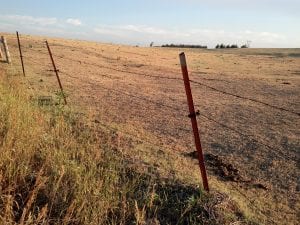Justin Waggoner, Beef Systems Specialist, Garden City
Forage growing conditions across Kansas ranged from exceptionally wet in some regions to drought in others. The much-needed rainfall in the western regions of the state were a welcome change but also created an increase in weed pressure in hay fields and made timely harvesting of forages challenging. The rapid on-set of drought in the central and North-central region of the state stressed forages and crops mid-season. All of these conditions could potentially affect forage quality and may greatly increase the risk of mold and nitrates in harvested forages, which can be harmful and toxic to livestock. This is the year to test your harvested forages! As the old saying goes “don’t guess…test”. Continue reading “Forage analysis: Don’t guess…Test!”

 The drought that plagued most of the state through the previous winter and this summer was a perfect storm that has some operations concerned about forages for this winter. There are areas that have limited pasture growth and even with some of the recent rains, the rain may be too late or insufficient to change the pasture situation. Through last winter, around the nation, there were producers that fed more hay than typical and that has used up a significant amount of hay reserves. Given all these factors, cattle producers need to find alternative feedstuffs to maintain current cow numbers. This article will address a few things to think about when trying to stretch forages.
The drought that plagued most of the state through the previous winter and this summer was a perfect storm that has some operations concerned about forages for this winter. There are areas that have limited pasture growth and even with some of the recent rains, the rain may be too late or insufficient to change the pasture situation. Through last winter, around the nation, there were producers that fed more hay than typical and that has used up a significant amount of hay reserves. Given all these factors, cattle producers need to find alternative feedstuffs to maintain current cow numbers. This article will address a few things to think about when trying to stretch forages. 